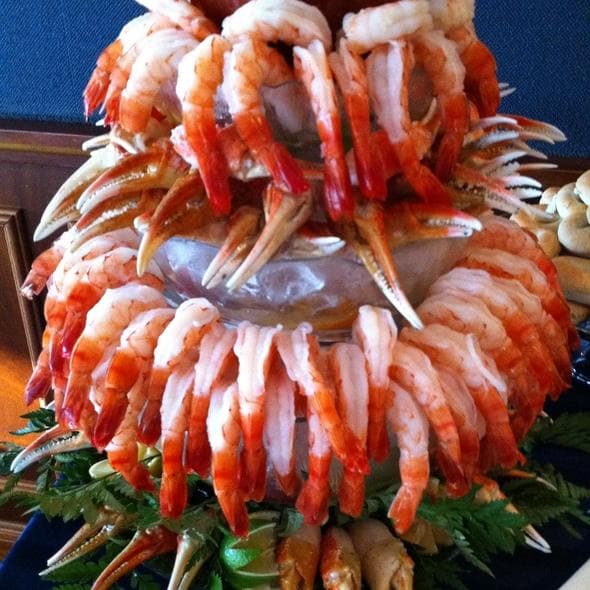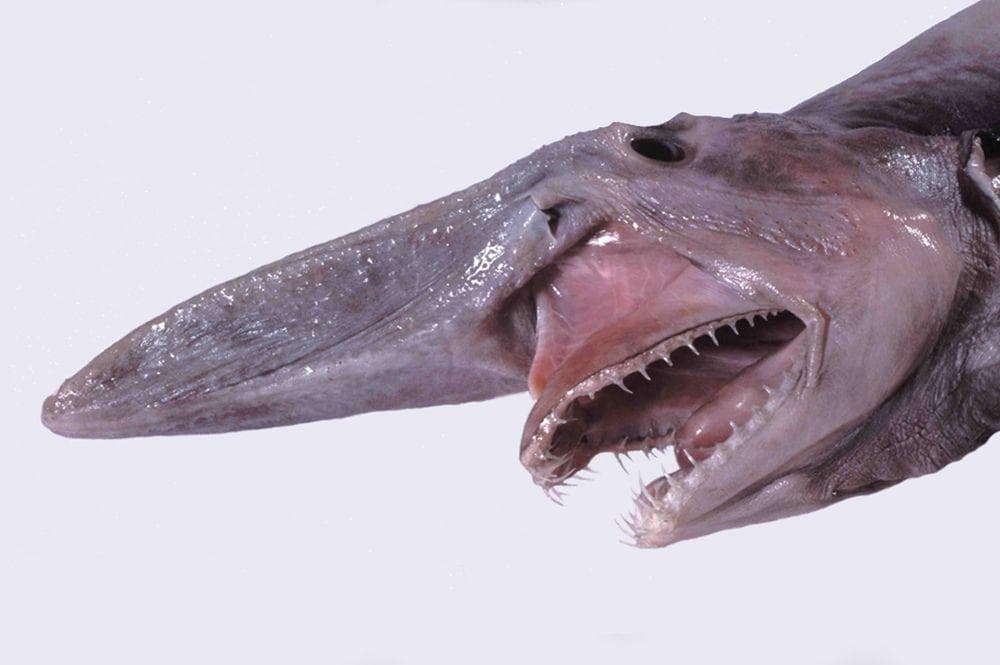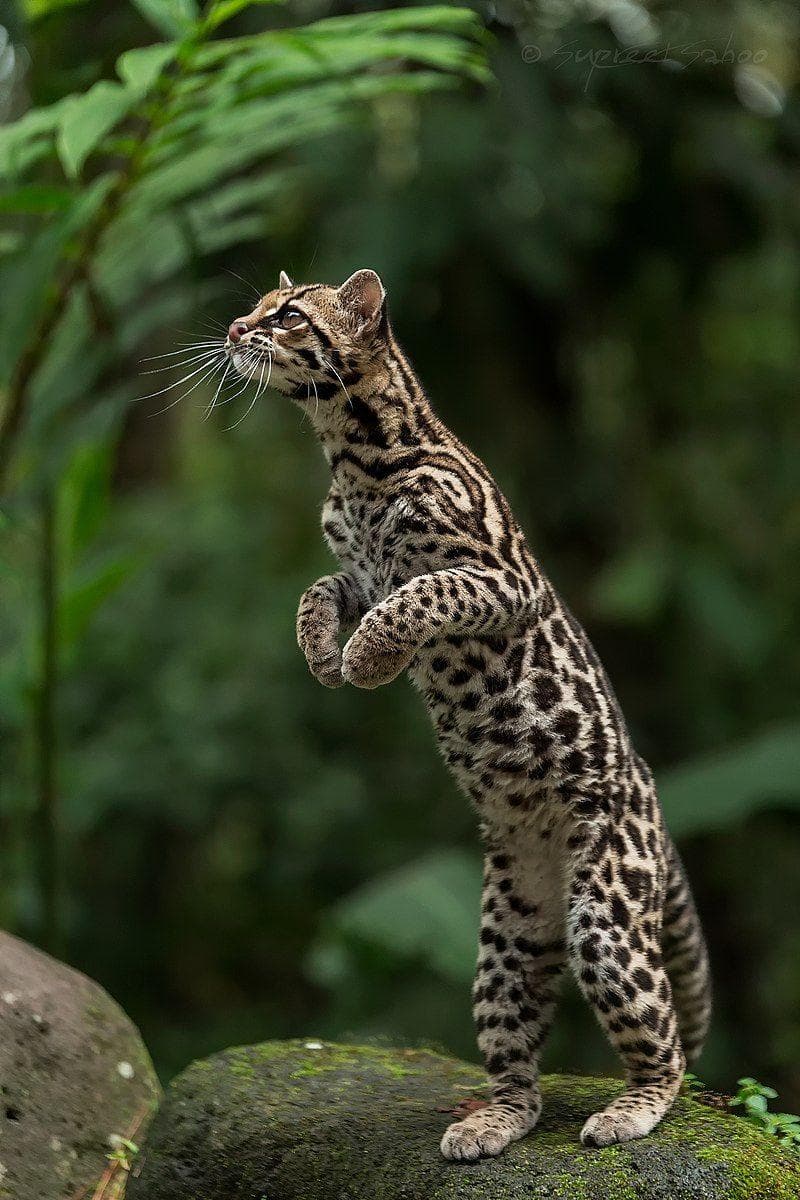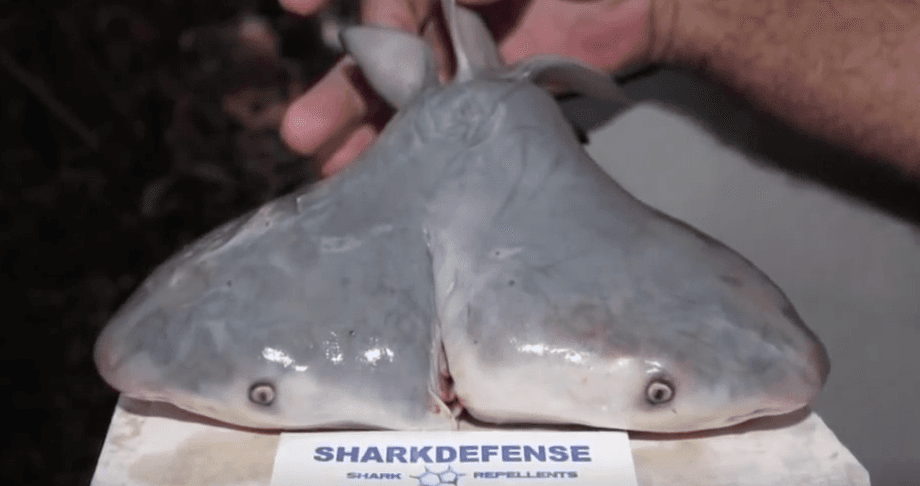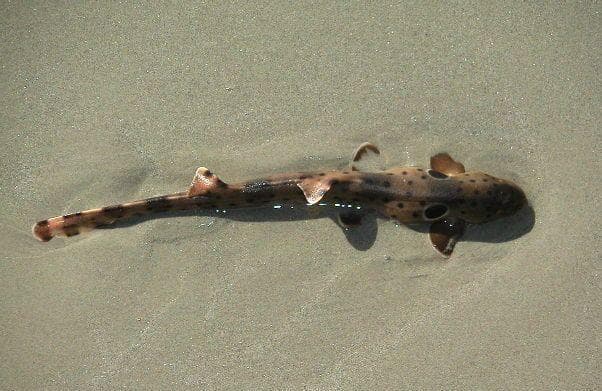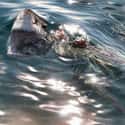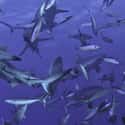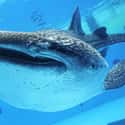-
(#1) When In A Frenzy, The Sharks Will Appear To Lose Their Minds
To the average observer, a feeding frenzy is a terrifying thing. Unlike with normal feeding habits, sharks do this in a group, with sudden and violent thrashing, and the presence of the other sharks only seem to make it more intense. Stealth is thrown to the wind, as is the usual slow circling form of hunting, making it seem like the sharks have just gone insane.
As people have described it, the sharks look frantic, quickly moving from one part of the source of food to the other. Sharks will appear to converge, all at once, on a single point, twisting and biting, then jerk away before attacking again in the same fashion. This is done again and again until the food source is depleted. They will chase down movement, and anything that gets in the way may be bitten, including other sharks.
-
(#2) Many Sharks Die During Feeding Frenzies
Unfortunately for the sharks, this feeding frenzy where they seem to throw caution to the wind can lead to serious issues for the group of sharks. While some species that go into frenzies appear to keep some sense of calm, even including a pecking order, that is not usually the case. Instead, the sharks swarm and converge all at once, and anything between them and the food is in potential danger. That includes other sharks. Sharks involved in a feeding frenzy have been known to disembowel each other, and even eat each other in their excitement over new blood spilled. If not, they can still be injured by brief bites or impacts of their fellow frenziers.
If this kind of behavior is so potentially dangerous to sharks, then thy does it happen? Scientists aren't entirely certain on this, but there are several possible factors.
-
(#3) Sharks May Keep Eating Even If They Are Dying
The instinct for a shark to eat is so strong that it tends to override pretty much anything else. During a feeding frenzy, that instinct is all the stronger. Research has shown that sharks will continue to eat even after they are full, perhaps as a survival instinct going back eons. They will also accidentally eat things that are not food, even including license plates and cannonballs! During a feeding frenzy, however, concentrating only on eating can have deadly results, not just for the potential prey.
When a feeding frenzy is happening, a shark will continue to eat even if it is injured. In fact, there are accounts of sharks being disemboweled, and continuing to try to eat and frenzy despite having a dire wound. Even if the wounded shark becomes a part of the prey during a feeding frenzy, they may continue trying to eat, even as their body is being consumed by others.
-
(#4) Sharks Are Excited By Signs Of Distress
A large number of prey in the water can also cause a disturbance in the water as the animal tries to get away. Living things give off chemicals into the water when they are panicking, and that attracts sharks. The sharks then feel vibrations and movement in the water that indicate extreme distress, and this lets them know that they have an easy meal incoming. The more the water is disturbed by panic, for example by a school of frantically swimming fish, the more excited they get. Add blood to that mixture, and the sharks will begin to attack with ferocity.
On top of that, other sharks in the area swimming frantically and attacking things also disturb the water. This becomes a self-creating cycle, where the sharks all keep each other at a high level of excitement as they feed.
-
(#5) The More Blood, The Hungrier The Shark
Another large part of this has to do with the fact that sharks are hungry. All the time. They are attracted strongly to the scent of blood, and their sense of smell is superb. Because of this, once an attack begins, the sharks are spurred on by further blood filling the water because the very presence of it makes them hungry. This blood triggers a message in the shark's brain: eat, and eat now!
This is also why shark frenzies often happen around tourist vessels and ships that offer swimming with sharks. In order to attract the sharks, they put chum in the water, which is high in blood. Because of this, sharks falsely sense that there is an overabundance of easy prey, and the collective excitement of a group of sharks rises to frenzied levels.
-
(#6) Normally, Sharks Use Stealth And Strategy Rather Than Brute Force
When you think of a shark attack, you may think of scenes from Jaws, where the shark leaps out of the water or swims through the water with its fin in the air. Again, this is mostly a myth.
When sharks hunt, which they usually do while solitary, they do their best to stay under their prey's radar. When toothed sharks go on the offensive, they do their best to silently and calmly come at their victims from below. Their dark color makes them blend in with the ocean and ocean floor beneath them, so their prey won't spot them. Then, they circle the prey, gaining in speed and violence of movements. Then, once they are close enough to be spotted, it's too late and they attack in a quick, darting motion.
The very force of their body's impact is sometimes enough to stun or kill a fish, even if their teeth don't do the job.
-
(#7) Sharks Will Occasionally Hunt In Packs
Although sharks usually remain solitary, they have been known to hunt in groups. This happens particularly around reefs and by the shore, because this is where prey often stays and attracts more sharks, and where the water is shallow so they can't exactly spread out. There are also certain species that seem to prefer to hunt in packs. The broadnose sevengills like to surround their prey all at once, and they move in a distracting way until one spots an opening and goes in for a sneak attack. Scalloped hammerheads are also in favor of group hunting, and have been spotted in groups of a hundred sharks or more. Unlike other sharks, they attack from above, because their white belly blends in with the sunlight near the surface.
These group hunts are where feeding frenzies happen most often, and although they are very rare, they can happen suddenly. Once the group takes even a bite of the prey, the attack is on.
-
(#8) Frenzies Are More Likely To Happen In Areas That Have A Ton Of Prey
One huge part of feeding frenzies has to do with an over-abundance of prey. Frenzies tend to happen in shallow water, where there are lots of fish and carrion, and it tends to happen when a group of sharks all focus on the same prey. When there's an inverted pyramid of prey-to-predator ratio, as in there are far more prey animals than predators, it becomes overwhelming. All it takes is a group of sharks to start eating, and as long as there is prey, they will keep eating. When blood is in the water, and there's plenty to eat, it's enough to simply drive sharks wild.
Frenzies can also happen around fishing vessels when the nets are bringing in large amounts of fish, and can occur when vessels put chum in the water to attract sharks for tourists.
-
(#9) Most Sharks Prefer Fish And Squids To Big Game
Let's get this out of the way early: sharks don't specifically want to eat you. It's true that sharks can and will attack humans, but this is because they are equal-opportunity predators, and some species, such as tiger sharks, are willing to chomp on just about anything. However, sharks don't specifically target humans, gain a taste for human flesh, or actually even want to eat animals like us. We're more trouble than we're worth, and we're not their natural prey.
In reality, sharks as a species prefer to eat fish, squids, and crustaceans. Even large sharks associated with huge attacks, like Great Whites, still eat fish and carrion, along with seals, whales, and turtles. This means that when a feeding frenzy does happen, human isn't exactly on the menu...unless you choose to get in the way of one.
-
(#10) Frenzies May Have To Do With Showing Dominance
Of course, one factor of shark frenzies may have to do with developing a pecking order. Because most species of sharks dine alone, when many individuals converge on one area, there can be some discomfort. The sharks may feel a sense of competition for the food, and even if there is an abundance, they may have an instinct that they have to fight for their ability to survive. To do this, they may show dominance.
The thrashing motion of the sharks may show force, aggression, and strength. The more frenzied an individual shark may seem, the more dominant they may seem. When you have a bunch of sharks all converging in one area, you end up with a lot of shows of dominance. Combined with all the other factors, this can result in what seems like blind aggression and rage, when in reality it is just a group of sharks all trying to prove to the others that they are top dog.
-
(#11) It Can Even Happen With Peaceful Sharks
When you think of a shark feeding frenzy, you probably think of great white sharks, or tiger sharks, both of which can be very vicious under certain circumstances. However, feeding frenzies happen to most types of sharks, including those that we generally think of as harmless.
Whale sharks have often mystified scientists. They feed by gaping their mouths, then swimming and eating small animals like krill, or fish eggs. This makes the whale shark one of only three known filter feeder sharks in the world. And yes, even they can become part of a feeding frenzy. Over 40 individuals show up regularly to one area of the Yucatan, where the water is rich in plankton, and once a year the sharks go into feeding frenzies. Unlike feeding frenzies where a group of sharks converge on a single point, the whale sharks simply swim quickly through the water with each other in a massive group, consuming as much as they can. They will come from over a hundred miles away to do this, and scientists are still studying the phenomenon even now.
-
(#12) Everything Can Return To Normal Almost Instantly
Startlingly enough, shark feeding frenzies tend to be pretty short lived. They begin once there is blood and prey in the water, and they continue until prey is depleted. Once it is gone, however, the sharks pretty much stop acting crazy. Without the excitement of panic and distress in the water, without blood flowing, and without an abundance of prey to compete for, the sharks have no reason to act aggressively. So they simply stop. Just as suddenly as the sharks may have seemed to get nuts, they will go back to normal behavior.
This behavior is not crazed, mindless, violent, or vengeful, as media often depicts. In fact, feeding frenzies are the only times sharks may appear to act this way, and even then, as you have just read, malice has little to do with shark behavior.
New Random Displays Display All By Ranking
About This Tool
Feeding frenzy describes the way sharks eat frantically and excitedly, the abundant foods may cause hundreds of sharks to snatch food fragments frantically at the fastest speed, which can cause the sharks to be crazy and bite anything that moves, including other sharks that are foraging. They usually eat alone, but sometimes they are attracted to prey when others are feeding.
Sharks have been around for about 400 million years, humans have learned a lot about these fascinating sea creatures. The random tool introduced 12 interesting facts about crazy shark feeding frenzies. There are many reports on the phenomenon of feeding frenzy around the world in recent years.
Our data comes from Ranker, If you want to participate in the ranking of items displayed on this page, please click here.

